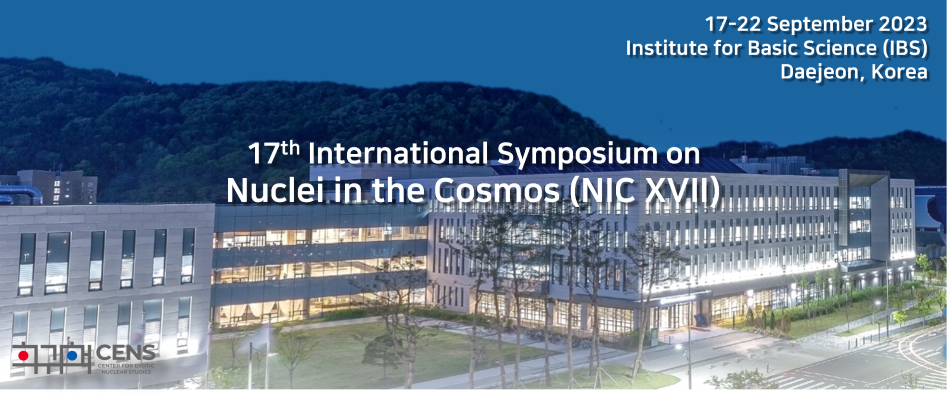Speaker
Description
Currently, the explanation behind the explosion mechanism of core collapse supernovae is yet to be fully understood. New insight to this phenomena may come through observations of $^{44}$Ti cosmic $\gamma$ rays; this technique compares the observed flux of cosmic $^{44}$Ti $\gamma$ rays to that predicted by state-of-the-art models of supernova explosions. In doing so, the mass cut point of the star can be found, a key hydrodynamic property of supernova that provides an understanding of the material that is either ejected from the explosion or bound to the residual neutron star or black hole. However, a road block in this procedure comes from a lack of precision in the nuclear reactions that destroy $^{44}$Ti in supernovae, most notably the reactions $^{44}$Ti$(\alpha,p)^{47}$V and $^{45}$V$(p,\gamma)^{46}$Cr. Therefore, this study aims to better understand the $^{45}$V$(p,\gamma)^{46}$Cr reaction by performing $\gamma$-ray spectroscopy of $^{46}$Cr with the aim of identifying proton-unbound resonant states.
The experiment was conducted at the ATLAS facility at Argonne National Laboratory, using the GRETINA+FMA setup. A beam of 120-MeV $^{36}$Ar ions are impinged onto a ~200 $\mu$g$\cdot$cm$^{-2}$ thick $^{12}$C target, producing $^{46}$Cr via the fusion-evaporation reaction $^{12}$C($^{36}$Ar,2$n$). The cross section for producing $^{46}$Cr, in this reaction, is estimated to be in the $\mu$b range. Nevertheless, with the power of the GRETINA+FMA setup, we show that it is possible to cleanly identify $\gamma$ rays in $^{46}$Cr. These include decays from previously unidentified states above the proton-emission threshold, corresponding to resonances in the $^{45}$V + $p$ system. This represents the state-of-the-art for in-beam $\gamma$ ray studies for full spectroscopy up to the excitation energy region relevant for astrophysical burning.

